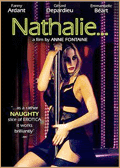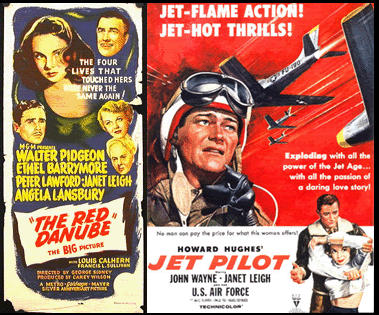
Last night the Genie Awards (Genie = Canadian FILM, not music, not TV) were handed out, with Polytechnique earning Best Motion Picture, Best Supporting Actor, Best Actress, Best Director, Best Art Direction, Best Screenplay, Best Editing, and Achievement in Overall Sound.
One Week nabbed the Best Actor, and Love & Savagery earned a Best Supporting Actress, while Best Adapted Screenplay went to Fifty Dead Men Walking, and Best Score was awarded to The Master Key.
I’ve pasted the complete list at the end (available as a PDF doc at the Genie’s website), but here’s one query that popped into my head when the CBC announced the Best Picture and Actor winners in last night’s news show The National: Was the show ever publicized by the CBC?
The CBC carried the show live via webcast - cable channel IFC was the actual TV host - but the CBC, having more media outlets than the cable station, barely mentioned the imminent awards show during ad breaks this past week.
The Genies has been a quandary for any network for a good twenty decades: How do you get people interested in films few have seen theatrically? How do you get them excited about an awards show that must fight against public apathy for Cancon, as well as fatigue from the monster that was The Oscars not long ago?
With many of the films widely available on DVD, the first question is moot; the movies are out there to buy online and in shops, as well as rent.
It’s the apathy that’s always been a problem.
I distinctly recall one of the Genie’s last live appearances on the CBC. Not sure of the exact year, but the thinking at the time was to spice things up, go against the traditional awards show format, and cram everyone into a large soundstage setup to resemble a nightclub.
A bar was to one side, the nominees were packed onto tightly arranged deck chairs, and the stage was made of buffed abstract metal.
Someone – the host - would wander back and forth from the bar to the nominees, blabbing factoids or terribly written jokes before the next award was handed out, and (I think) because the show was packed into an hour time slot, the whole thing was rushed, worsened by ad breaks. At the end, the host sung an improve piece (David Cronenberg was mentioned, since he was nearby on a deck chair) and the credits rolled fast so the evening news could begin.
My details might be a bit fuzzy, but I do remember a sense of genuine discomfort among the nominees, with cameras trained on them as they were supposed to laugh at bad jokes and perk up when the show returned from a clump of ads.
That airing was a disaster, and ranks as one of the most ill-conceived awards shows I’ve ever seen. I’d argue that it was the nadir, because the telecast must have prompted the Genies organization to slowly rethink how it should present itself in order to get audiences as well as networks to care.
I lost interest in later shows, and I think other networks tried to make a go of the Genies in later years, with an edited version aired after the fact one year. The 2010 awards are slated for rebroadcast on May 9th, and anyone can access clips of the winners online, all of which is good, but I can’t help asking: Did the CBC do enough?
Even if one presumes the awards were mentioned at regular intervals, there’s the issue of the winners being reduced last night to a mere mention of Polytechnique and One Week. Two names sync’d to film clips, and it was over.
Frankly, that’s not good enough, and while you could blame the CBC’s revamped news format – more ad breaks than ever before – for affecting the length of each news segment, you have to wonder: Was it really so impossible to squeeze in additional details about the winners?
The only other explanation is perhaps IFC had exclusive TV rights, prohibiting the CBC from showing any clips outside of the web realm. In any event, while many of the films are now available on DVD (see hyperlinked titles), it’s unsettling that the winners, if not the awards show, have been pushed to the fringes yet again, albeit with an active online presence.
The 30th Annual Genie Award winners are:
BEST MOTION PICTURE / MEILLEUR FILM
POLYTECHNIQUE - Maxime Rémillard, Don Carmody
---
PERFORMANCE BY AN ACTOR IN A LEADING ROLE / INTERPRÉTATION
MASCULINE DANS UN PREMIER RÔLE
JOSHUA JACKSON - One Week
PERFORMANCE BY AN ACTOR IN A SUPPORTING ROLE / INTERPRÉTATION
MASCULINE DANS UN RÔLE DE SOUTIEN
MAXIM GAUDETTE – Polytechnique
PERFORMANCE BY AN ACTRESS IN A LEADING ROLE / INTERPRÉTATION
FÉMININE DANS UN PREMIER RÔLE
KARINE VANASSE - Polytechnique
PERFORMANCE BY AN ACTRESS IN A SUPPORTING ROLE / INTERPRÉTATION FÉMININE DANS
UN RÔLE DE SOUTIEN
MARTHA BURNS - Love & Savagery
---
ACHIEVEMENT IN DIRECTION / MEILLEURE RÉALISATION
DENIS VILLENEUVE – Polytechnique
---
ORIGINAL SCREENPLAY / MEILLEUR SCÉNARIO
JACQUES DAVIDTS – Polytechnique
ADAPTED SCREENPLAY / MEILLEURE ADAPTATION
KARI SKOGLAND - Fifty Dead Men Walking
---
ACHIEVEMENT IN CINEMATOGRAPHY / MEILLEURES IMAGES
PIERRE GILL – Polytechnique
ACHIEVEMENT IN EDITING / MEILLEUR MONTAGE
RICHARD COMEAU – Polytechnique
---
ACHIEVEMENT IN MUSIC - ORIGINAL SCORE / MEILLEURE MUSIQUE ORIGINALE
NORMAND CORBEIL - Grande ourse: La clé des possibles / The Master Key
ACHIEVEMENT IN MUSIC - ORIGINAL SONG / MEILLEURE CHANSON ORIGINALE
JOHN WELSMAN, CHERIE CAMP - NURSE.FIGHTER.BOY – “Oh Love”
ACHIEVEMENT IN OVERALL SOUND / MEILLEUR SON D'ENSEMBLE
STÉPHANE BERGERON, PIERRE BLAIN, JO CARON, BENOÎT LEDUC – Polytechnique
ACHIEVEMENT IN SOUND EDITING / MEILLEUR MONTAGE SONORE
CLAUDE BEAUGRAND, GUY FRANCOEUR, CAROLE GAGNON, CHRISTIAN RIVEST – Polytechnique
---
ACHIEVEMENT IN ART DIRECTION/PRODUCTION DESIGN / MEILLEURE DIRECTION ARTISTIQUE
EVE STEWART - Fifty Dead Men Walking
ACHIEVEMENT IN COSTUME DESIGN / MEILLEURS COSTUMES
ATUAT AKITTIRQ - Before Tomorrow
ACHIEVEMENT IN MAKE-UP / MEILLEURS MAQUILLAGES
DJINA CARON, ANDRÉ DUVAL - Grande ourse: La clé des possibles / The Master Key
---
BEST FEATURE LENGTH DOCUMENTARY / MEILLEUR LONG MÉTRAGE DOCUMENTAIRE
A HARD NAME - Alan Zweig, Kristina McLaughlin, Michael McMahon
BEST SHORT DOCUMENTARY / MEILLEUR COURT MÉTRAGE DOCUMENTAIRE
THE DELIAN MODE - Kara Blake, Marie-Josée Saint-Pierre
BEST LIVE ACTION SHORT DRAMA / MEILLEUR COURT MÉTRAGE DRAMATIQUE
DANSE MACABRE - Pedro Pires, Catherine Chagnon
BEST ANIMATED SHORT / MEILLEUR COURT MÉTRAGE D'ANIMATION
RUNAWAY / TRAIN EN FOLIE - Cordell Barker, Derek Mazur, Michael Scott
---
SPECIAL AWARDS
ACADEMY SPECIAL ACHIEVEMENT AWARD
Mel Hoppenheim
CLAUDE JUTRA AWARD
XAVIER DOLAN – J’ai tué ma mère / I Killed My Mother
GOLDEN REEL AWARD
De père en flic / Father and Guns – Denise Robert, Daniel Louis, (Distributor: Alliance Vivafilm)
Mark R. Hasan, Editor
KQEK.com
 The release of the 3-disc set The Prisoner: The Complete Chappell Recorded Music Library Cues pretty much completes the grand quest fans wanting every note of music used in the original 1967 series starring Patrick McGoohan, but it’s also a rare instance where vintage, unedited material from a music library is commercially available for listening purposes.
The release of the 3-disc set The Prisoner: The Complete Chappell Recorded Music Library Cues pretty much completes the grand quest fans wanting every note of music used in the original 1967 series starring Patrick McGoohan, but it’s also a rare instance where vintage, unedited material from a music library is commercially available for listening purposes.



















